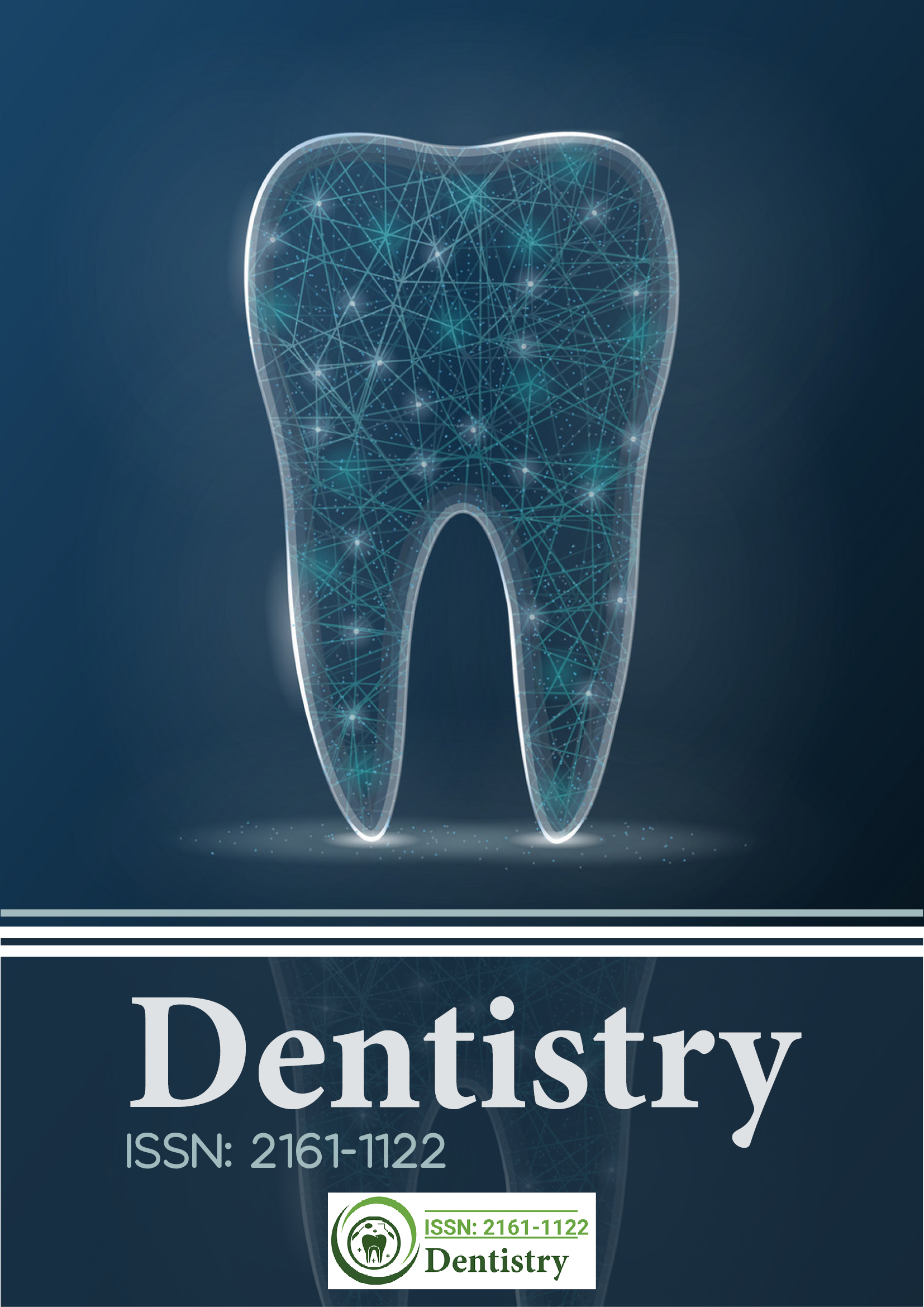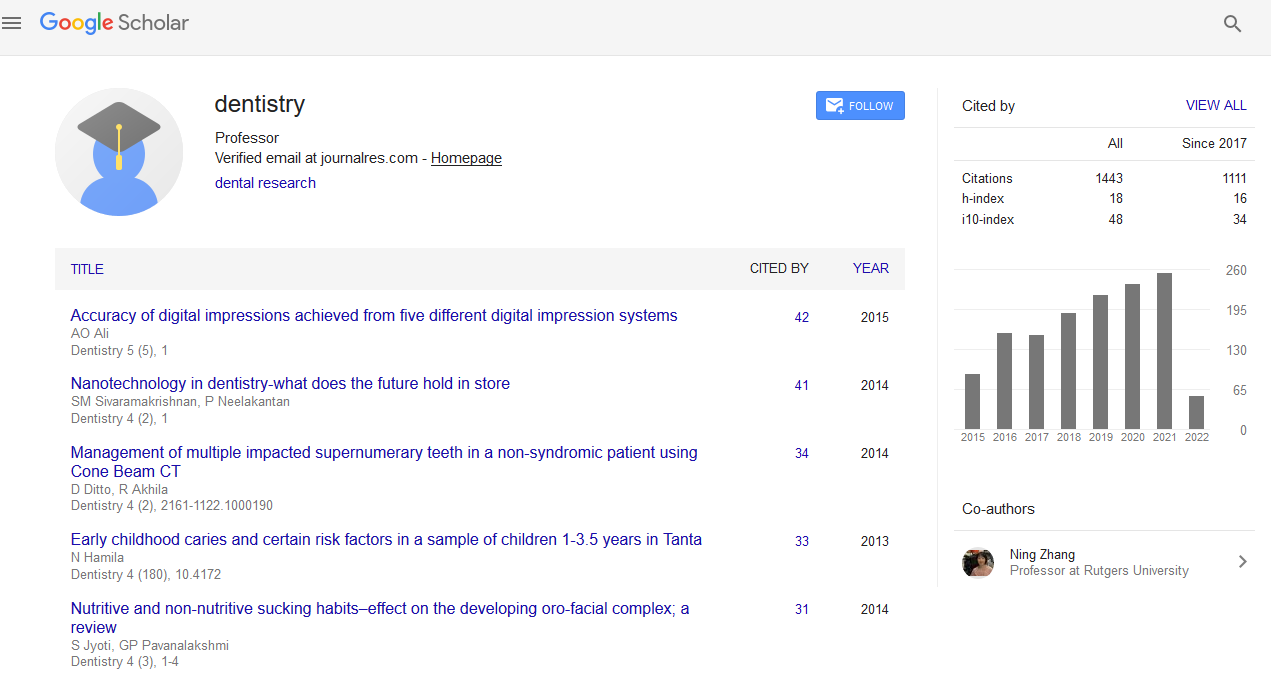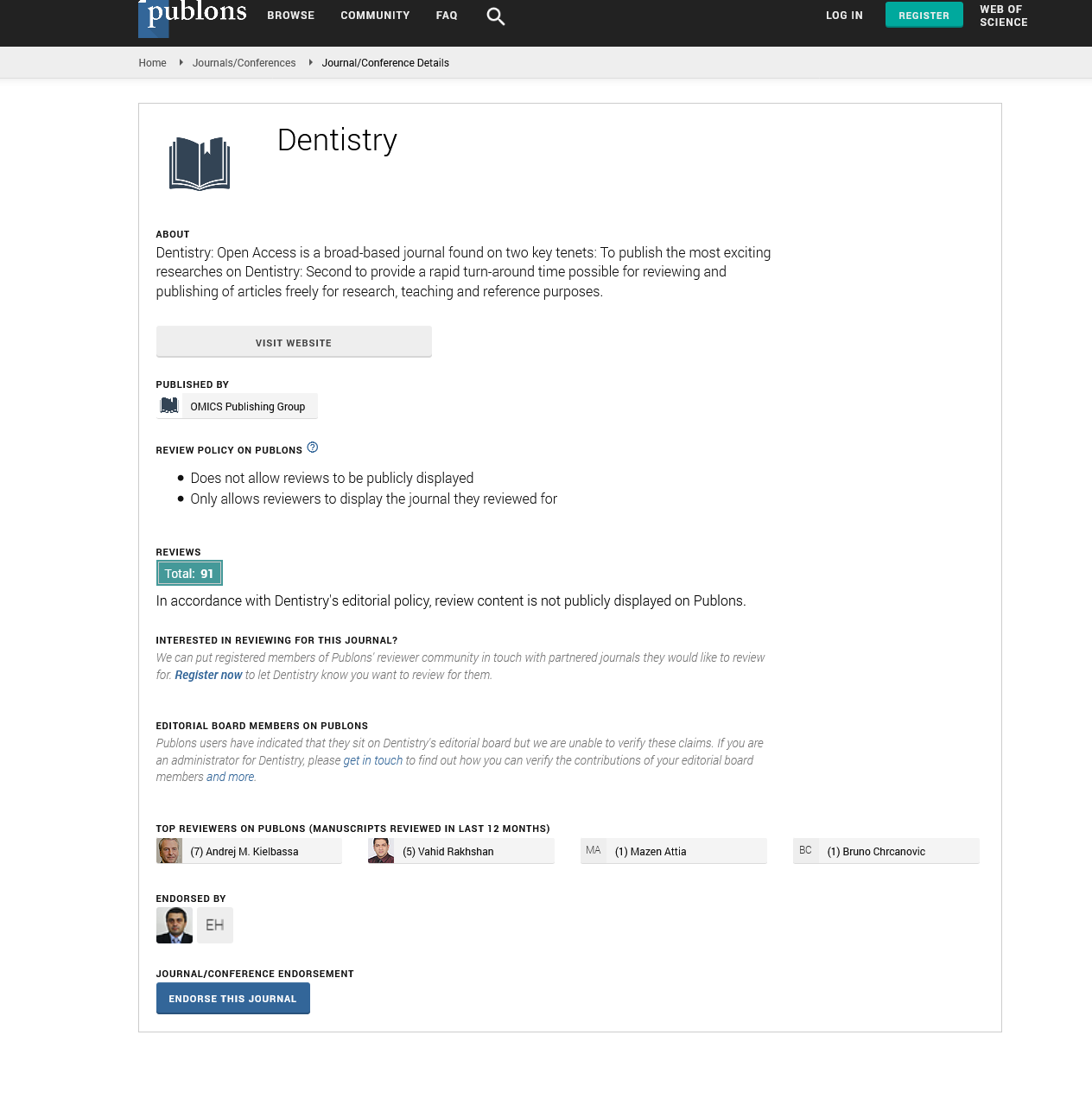Citations : 1817
Dentistry received 1817 citations as per Google Scholar report
Indexed In
- Genamics JournalSeek
- JournalTOCs
- CiteFactor
- Ulrich's Periodicals Directory
- RefSeek
- Hamdard University
- EBSCO A-Z
- Directory of Abstract Indexing for Journals
- OCLC- WorldCat
- Publons
- Geneva Foundation for Medical Education and Research
- Euro Pub
- Google Scholar
Useful Links
Share This Page
Journal Flyer

Open Access Journals
- Agri and Aquaculture
- Biochemistry
- Bioinformatics & Systems Biology
- Business & Management
- Chemistry
- Clinical Sciences
- Engineering
- Food & Nutrition
- General Science
- Genetics & Molecular Biology
- Immunology & Microbiology
- Medical Sciences
- Neuroscience & Psychology
- Nursing & Health Care
- Pharmaceutical Sciences
Abstract
Tooth Loss, Chewing Ability and Quality of Life
Marcelo Carlos Bortoluzzi, Jefferson Traebert, Renata Lasta, Thaiany Naila da Rosa and Diogo Lenzi Capella
Objectives: The aim of this study was to observe the tooth loss over age in a sample of Brazilian patients and analyze their ability to chew, relating it to how much the lost of oral function impact over quality of life (QoL).
Materials and methods: This is a single center, observational study and the data were collected through clinical examination followed of questionnaires to obtain socio demographic information, the ability to chew (through the index of chewing ability - ICA) and QoL (through Oral Health Impact Profile, OHIP-14).
Results: The sample was composed of 171 random volunteers with mean age of 47 (SD 15.2). Low number of natural teeth was associated with increase in age (Spearman’s rho correlation coefficient -.7, P<.001, 2-tailed) and chew disability (ICA: chew’s ability versus disability) (Mann-Whitney U-Test, P<.001). Chew disability showed a negative impact over the QoL (overall OHIP; Mann-Whitney U Test P<.001) and in 5 of 7 OHIP domains (Functional Limitation, Physical Pain, Psychological Discomfort, Physical Disability, Psychological Disability). Age over than 40 years, was also associated with chewing disability (Pearson Chi-Square P<.001) and poorer quality of life (Mann-Whitney U test P=.01).
Conclusion: This study observed that the chewing disability produce a significant and negative impact over oral health related quality of life and both, poor quality of life and chewing disability are related with the decrease of the number of natural teeth.


